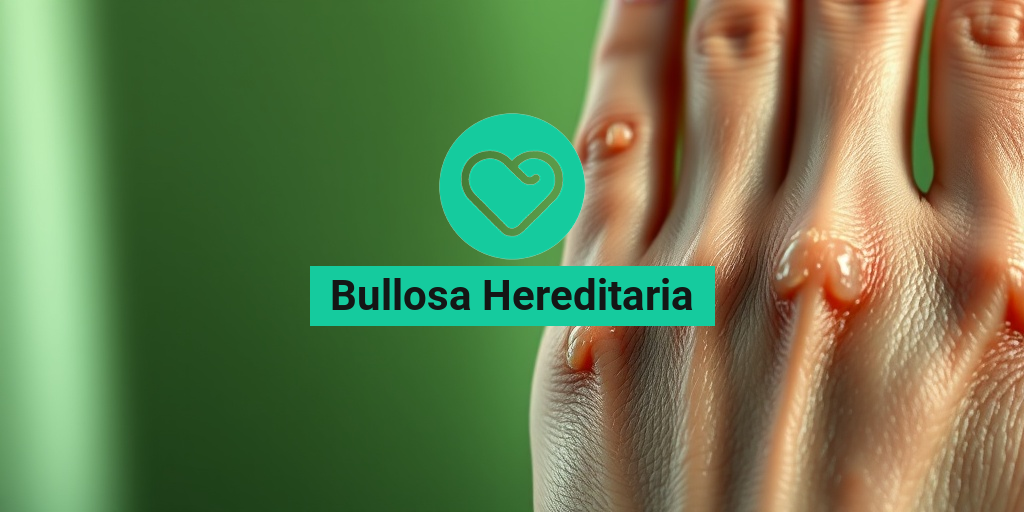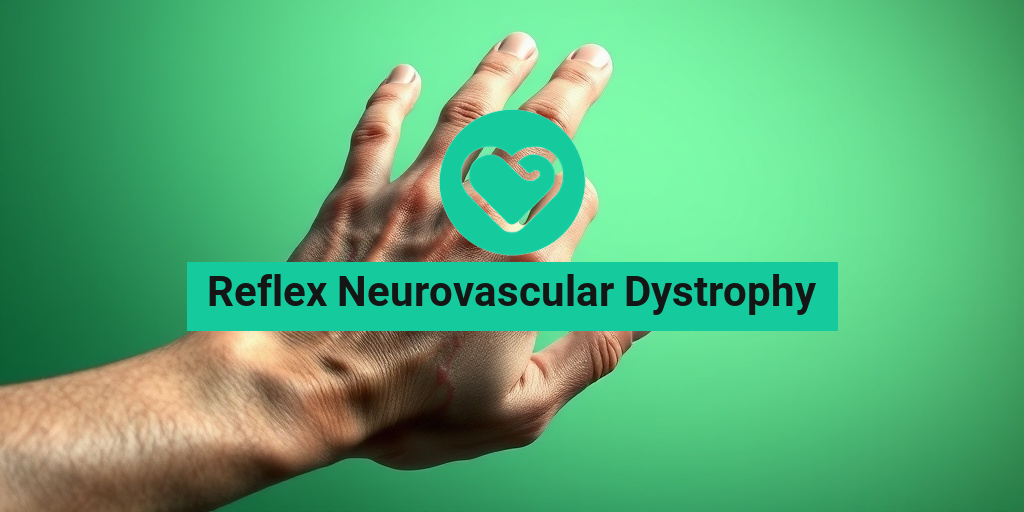What Is Bullosa Hereditaria?
Bullosa Hereditaria, commonly known as Epidermolysis Bullosa (EB), is a rare genetic skin disorder characterized by extreme fragility of the skin and mucous membranes. This condition leads to the formation of blisters and sores in response to minor trauma or friction. The term “bullosa” refers to the blistering aspect of the condition, while “hereditaria” indicates its genetic nature, meaning it is passed down through families.
Understanding the Types of Bullosa Hereditaria
There are several types of Bullosa Hereditaria, each varying in severity and symptoms:
- Epidermolysis Bullosa Simplex (EBS): The mildest form, where blisters typically form on the hands and feet.
- Epidermolysis Bullosa Dystrophica (EBD): A more severe type that can lead to scarring and deformities.
- Epidermolysis Bullosa Junctional (EBJ): A rare and severe form that affects the junction between the epidermis and dermis.
Each type is caused by mutations in different genes responsible for skin integrity. Understanding these variations is crucial for effective management and treatment.
How Is Bullosa Hereditaria Inherited?
Bullosa Hereditaria is typically inherited in an autosomal dominant or autosomal recessive manner. This means that a child can inherit the condition if one or both parents carry the mutated gene. Genetic counseling is often recommended for families with a history of EB to understand the risks and implications of passing on the condition.
Bullosa Hereditaria Symptoms
The symptoms of Bullosa Hereditaria can vary significantly depending on the type and severity of the condition. However, some common symptoms include:
Blister Formation
The hallmark of Bullosa Hereditaria is the formation of blisters, which can occur on any part of the body, particularly in areas prone to friction, such as:
- Hands
- Feet
- Elbows
- Knees
These blisters can be painful and may lead to open sores, increasing the risk of infection.
Skin Fragility
Individuals with Bullosa Hereditaria often experience extremely fragile skin that can tear or blister easily. This fragility can lead to chronic wounds and discomfort, impacting daily activities.
Other Associated Symptoms
In addition to blistering, other symptoms may include:
- Itching: Many individuals report intense itching, which can exacerbate skin damage.
- Scarring: Over time, repeated blistering can lead to scarring and skin deformities.
- Dental Issues: Some forms of EB can affect the mouth, leading to dental problems.
Managing Bullosa Hereditaria
While there is currently no cure for Bullosa Hereditaria, effective management strategies can help alleviate symptoms and improve quality of life. These may include:
- Wound Care: Proper wound care is essential to prevent infections and promote healing.
- Pain Management: Over-the-counter pain relievers or prescribed medications can help manage discomfort.
- Protective Dressings: Specialized dressings can protect fragile skin and reduce friction.
For more comprehensive information and resources, consider visiting Yesil Health AI, where you can find evidence-based health answers tailored to your needs.
In conclusion, understanding Bullosa Hereditaria is crucial for those affected and their families. By recognizing the symptoms and implementing effective management strategies, individuals can lead fulfilling lives despite the challenges posed by this condition. 🌟

Bullosa Hereditaria Causes
Bullosa Hereditaria, commonly known as Epidermolysis Bullosa (EB), is a group of rare genetic disorders that cause fragile skin, leading to blister formation. Understanding the causes of this condition is crucial for those affected and their families. Let’s delve into the primary causes of Bullosa Hereditaria.
Genetic Mutations
The primary cause of Bullosa Hereditaria is genetic mutations that affect the proteins responsible for skin integrity. These mutations can occur in various genes, leading to different forms of the condition. The most common types include:
- Epidermolysis Bullosa Simplex (EBS): This type is caused by mutations in the keratin genes (KRT5 and KRT14), which are essential for skin structure.
- Epidermolysis Bullosa Dystrophica (EBD): This form results from mutations in the COL7A1 gene, which encodes type VII collagen, crucial for anchoring the epidermis to the dermis.
- Epidermolysis Bullosa Junctional (EBJ): Caused by mutations in genes that produce proteins involved in the basement membrane zone, such as LAMA3, LAMB3, and LAMC2.
These genetic mutations are inherited in an autosomal dominant or autosomal recessive manner, meaning that the condition can be passed down from one or both parents. In some cases, the mutations can occur spontaneously, leading to new cases of Bullosa Hereditaria in families without a prior history of the disorder.
Environmental Factors
While genetic factors play a significant role, certain environmental factors can exacerbate the symptoms of Bullosa Hereditaria. These include:
- Friction and Trauma: Activities that cause friction on the skin, such as vigorous exercise or wearing tight clothing, can lead to blister formation.
- Temperature Changes: Extreme temperatures, whether hot or cold, can affect skin integrity and increase the risk of blistering.
- Infections: Skin infections can complicate the condition, leading to more severe symptoms and increased discomfort.
Understanding these causes can help individuals manage their condition more effectively and take preventive measures to minimize blister formation. 🌟
Bullosa Hereditaria Risk Factors
Identifying the risk factors associated with Bullosa Hereditaria is essential for early diagnosis and management. While the condition is primarily genetic, several factors can influence its severity and the likelihood of developing complications.
Family History
One of the most significant risk factors for Bullosa Hereditaria is a family history of the condition. If a parent carries a genetic mutation associated with EB, there is a chance that their children may inherit the disorder. Genetic counseling can be beneficial for families with a history of Bullosa Hereditaria, as it provides insights into the likelihood of passing on the condition.
Type of Epidermolysis Bullosa
The specific type of Bullosa Hereditaria also influences risk factors. For instance:
- Epidermolysis Bullosa Simplex: Generally considered the mildest form, individuals may experience fewer complications compared to those with dystrophic or junctional forms.
- Epidermolysis Bullosa Dystrophica: This type can lead to more severe complications, including scarring and deformities, making individuals more susceptible to infections.
- Epidermolysis Bullosa Junctional: Often associated with more severe symptoms and a higher risk of life-threatening complications.
Age and Gender
While Bullosa Hereditaria can affect individuals of any age or gender, some studies suggest that certain types may present differently based on these factors. For example, males and females may experience varying degrees of severity in symptoms, and age can influence the onset and progression of the condition.
Overall Health and Immune Function
Individuals with compromised immune systems or other underlying health conditions may be at a higher risk for complications related to Bullosa Hereditaria. Maintaining overall health through proper nutrition, hydration, and regular medical check-ups can help mitigate some risks associated with the condition.
In conclusion, understanding the causes and risk factors of Bullosa Hereditaria is vital for effective management and support. By being aware of these elements, individuals and families can take proactive steps to improve quality of life and reduce the impact of this challenging condition. 💪

Bullosa Hereditaria Diagnosis
Bullosa Hereditaria, commonly known as Epidermolysis Bullosa (EB), is a group of rare genetic skin disorders characterized by fragile skin that blisters easily. Diagnosing this condition can be complex, as it encompasses several subtypes, including Epidermolysis Bullosa Hereditaria Simplex and Epidermolysis Bullosa Hereditaria Dystrophica. Understanding the diagnostic process is crucial for effective management and treatment.
Clinical Evaluation
The first step in diagnosing Bullosa Hereditaria typically involves a thorough clinical evaluation. A healthcare provider will assess the patient’s medical history and conduct a physical examination. Key indicators include:
- Blister Formation: Frequent and spontaneous blistering, especially in response to minor trauma.
- Family History: A history of similar skin conditions in family members can suggest a genetic component.
- Age of Onset: Symptoms often appear at birth or in early childhood, but some forms may manifest later.
Genetic Testing
To confirm a diagnosis of Bullosa Hereditaria, genetic testing is often recommended. This involves:
- DNA Analysis: A sample of the patient’s blood or skin is analyzed to identify mutations in genes associated with EB.
- Carrier Testing: Family members may also undergo testing to determine if they carry the genetic mutations.
Genetic testing not only confirms the diagnosis but also helps in understanding the specific subtype of EB, which is essential for tailoring treatment options.
Histological Examination
In some cases, a skin biopsy may be performed. This involves taking a small sample of skin and examining it under a microscope. The histological examination can reveal:
- Separation Levels: Determining whether the blistering occurs within the epidermis or at the dermal-epidermal junction.
- Cellular Changes: Identifying any abnormal cellular structures that may indicate a specific subtype of EB.
Bullosa Hereditaria Treatment Options
While there is currently no cure for Bullosa Hereditaria, various treatment options can help manage symptoms and improve the quality of life for affected individuals. Treatment strategies often focus on wound care, pain management, and preventing complications.
Wound Care Management
Proper wound care is essential for individuals with Bullosa Hereditaria. This includes:
- Gentle Cleansing: Using mild, non-irritating cleansers to clean blisters and wounds.
- Dressings: Applying specialized dressings that promote healing and protect the skin from further injury.
- Moisturizers: Keeping the skin hydrated to prevent dryness and cracking.
Pain Management
Pain associated with blistering can be significant. Treatment options may include:
- Topical Analgesics: Creams or ointments that can help relieve localized pain.
- Oral Medications: Over-the-counter pain relievers or prescription medications for more severe pain.
Preventive Measures
Preventing complications is a key aspect of managing Bullosa Hereditaria. This can involve:
- Avoiding Trauma: Taking precautions to minimize skin injuries, such as wearing protective clothing.
- Regular Check-ups: Routine visits to a dermatologist to monitor skin health and address any emerging issues.
Supportive Therapies
In addition to medical treatments, supportive therapies can enhance the overall well-being of individuals with Bullosa Hereditaria. These may include:
- Physical Therapy: To maintain mobility and prevent contractures.
- Psychological Support: Counseling or support groups to help cope with the emotional aspects of living with a chronic condition.
In conclusion, while Bullosa Hereditaria presents significant challenges, early diagnosis and a comprehensive treatment plan can greatly improve the quality of life for those affected. By understanding the condition and its management, individuals and families can navigate the complexities of living with this rare genetic disorder. 🌟

Bullosa Hereditaria Management Strategies
Bullosa Hereditaria, commonly known as Epidermolysis Bullosa (EB), is a group of rare genetic skin disorders that cause fragile skin, leading to blistering and wounds. Managing this condition requires a comprehensive approach that focuses on minimizing symptoms, preventing complications, and improving the quality of life for those affected. Here are some effective management strategies:
1. Skin Care Regimen
Maintaining healthy skin is crucial for individuals with Bullosa Hereditaria. A consistent skin care regimen can help reduce the risk of blisters and infections. Here are some tips:
- Gentle Cleansing: Use mild, fragrance-free cleansers to avoid irritation.
- Moisturization: Regularly apply emollients to keep the skin hydrated and reduce friction.
- Protective Dressings: Use specialized dressings to cover blisters and wounds, promoting healing and preventing further injury.
2. Pain Management
Pain is a common symptom associated with Bullosa Hereditaria. Effective pain management strategies include:
- Topical Analgesics: Over-the-counter creams or gels can help alleviate localized pain.
- Oral Medications: Non-steroidal anti-inflammatory drugs (NSAIDs) may be prescribed for more severe pain.
- Alternative Therapies: Techniques such as acupuncture or relaxation exercises can also provide relief.
3. Nutritional Support
Individuals with Bullosa Hereditaria may face challenges with nutrition due to oral blistering. Ensuring proper nutrition is vital for healing and overall health:
- Soft Foods: Opt for soft, easy-to-swallow foods to minimize discomfort.
- High-Calorie Diet: Incorporate calorie-dense foods to meet energy needs, especially if healing from wounds.
- Hydration: Stay well-hydrated to support skin health and overall well-being.
4. Psychological Support
Living with a chronic condition like Bullosa Hereditaria can take a toll on mental health. Providing psychological support is essential:
- Counseling: Professional counseling can help individuals cope with the emotional aspects of the condition.
- Support Groups: Joining support groups can provide a sense of community and shared experiences.
- Education: Educating patients and families about the condition can empower them and reduce anxiety.
5. Regular Medical Check-ups
Routine visits to healthcare professionals are crucial for monitoring the condition and preventing complications:
- Dermatologist Visits: Regular check-ups with a dermatologist can help manage skin issues effectively.
- Genetic Counseling: For families affected by Bullosa Hereditaria, genetic counseling can provide valuable information about inheritance patterns and risks.
Bullosa Hereditaria Outlook and Prognosis
The outlook for individuals with Bullosa Hereditaria varies significantly depending on the specific type of EB and the severity of symptoms. Understanding the prognosis can help patients and families prepare for the future.
1. Types of Bullosa Hereditaria
There are several types of Bullosa Hereditaria, each with its own prognosis:
- Epidermolysis Bullosa Simplex: Generally has a milder course, with many individuals leading relatively normal lives.
- Epidermolysis Bullosa Dystrophica: This type can be more severe, with a higher risk of complications such as scarring and skin cancer.
- Epidermolysis Bullosa Junctional: Often presents with more severe symptoms and can significantly impact life expectancy.
2. Factors Influencing Prognosis
Several factors can influence the prognosis for individuals with Bullosa Hereditaria:
- Severity of Symptoms: The more severe the symptoms, the greater the risk of complications.
- Age of Onset: Early onset of symptoms may correlate with a more severe course of the disease.
- Access to Care: Regular medical care and adherence to management strategies can improve outcomes.
3. Quality of Life Considerations
While Bullosa Hereditaria can present significant challenges, many individuals can lead fulfilling lives with appropriate management:
- Adaptations: Many people adapt their lifestyles to accommodate their condition, allowing them to pursue education and careers.
- Community Support: Engaging with support networks can enhance emotional well-being and resilience.
In conclusion, while Bullosa Hereditaria poses unique challenges, effective management strategies and a supportive environment can significantly improve the outlook and quality of life for those affected. 🌟

Frequently Asked Questions about Bullosa Hereditaria
What is Bullosa Hereditaria?
Bullosa Hereditaria refers to a group of genetic skin disorders characterized by the formation of blisters on the skin and mucous membranes. These conditions are primarily caused by mutations in genes responsible for the structure and function of the skin.
What are the types of Bullosa Hereditaria?
- Epidermolysis Bullosa Hereditaria Simplex: The mildest form, often presenting with blisters on hands and feet.
- Epidermolysis Bullosa Hereditaria Dystrophica: A more severe form that can lead to scarring and deformities.
- Epidermolysis Bullosa Hereditaria Pemphigus: A rare variant that may involve autoimmune components.
What are the symptoms of Epidermolysis Bullosa Simplex?
Common symptoms include:
- Blister formation on the skin, especially in response to minor trauma.
- Fragile skin that is prone to tearing.
- Possible pain and discomfort in affected areas.
What does “Bullosa” mean?
The term “Bullosa” refers to the presence of blisters (bullae) that form in the skin due to various underlying conditions, including genetic disorders like Bullosa Hereditaria.
How is Bullosa Hereditaria diagnosed?
Diagnosis typically involves:
- Clinical examination of the skin.
- Family history assessment.
- Genetic testing to identify specific mutations.
Is there a cure for Bullosa Hereditaria?
Currently, there is no cure for Bullosa Hereditaria. Treatment focuses on managing symptoms, preventing infections, and improving the quality of life for affected individuals.
How can I care for someone with Bullosa Hereditaria?
Caring for someone with this condition involves:
- Keeping the skin clean and protected.
- Using gentle, non-irritating products.
- Monitoring for signs of infection.
Where can I find support for Bullosa Hereditaria?
Support can be found through:
- Patient advocacy groups.
- Online forums and communities.
- Healthcare providers specializing in genetic skin disorders.
Can Bullosa Hereditaria be inherited?
Yes, Bullosa Hereditaria is typically inherited in an autosomal dominant or recessive pattern, depending on the specific type of the disorder.
Are there any lifestyle changes that can help manage Bullosa Hereditaria?
Yes, individuals can benefit from:
- Avoiding activities that may cause skin trauma.
- Wearing protective clothing.
- Maintaining a healthy diet to support skin health.
What should I do if I suspect I have Bullosa Hereditaria?
If you suspect you or a family member may have Bullosa Hereditaria, it is important to consult a healthcare professional for proper evaluation and guidance.




